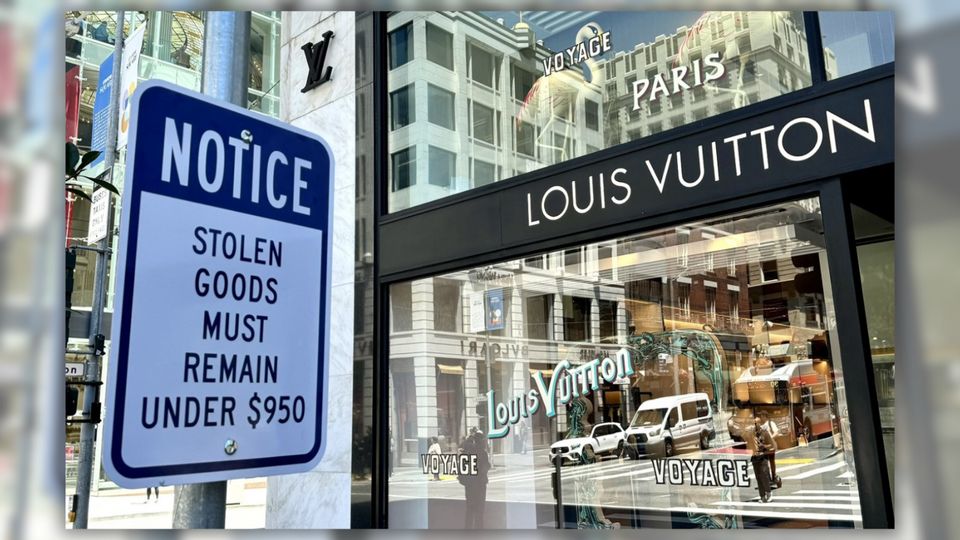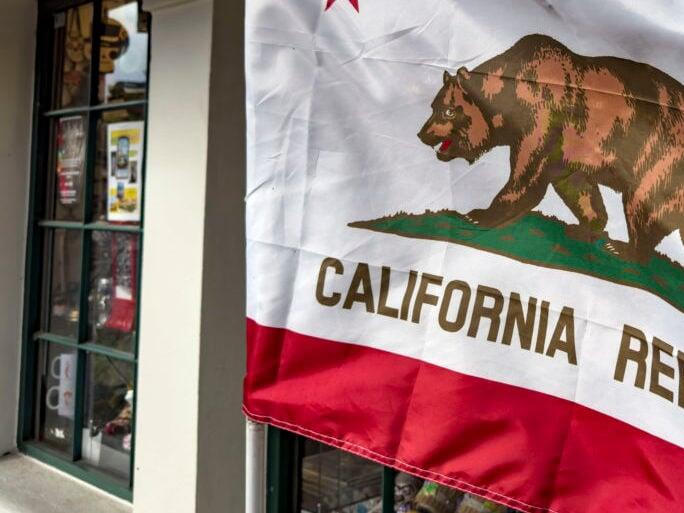San Francisco stolen goods sign is a critical topic that has gained significant attention over the years. The city's vibrant culture and bustling economy make it a hub for various activities, including illegal trading of stolen items. Understanding the implications of these signs and their role in combating theft is crucial for residents and visitors alike. This article dives deep into the subject, exploring its significance, legal aspects, and preventive measures.
San Francisco, known for its iconic landmarks and diverse population, faces unique challenges related to crime and theft. One of the most visible indicators of this issue is the prevalence of stolen goods signs across the city. These signs often serve as warnings to potential buyers and sellers, emphasizing the dangers associated with purchasing or selling stolen items.
In this article, we will explore the history, legal implications, and preventive strategies related to stolen goods in San Francisco. By the end, you'll have a comprehensive understanding of how these signs work and why they are essential in maintaining public safety.
Read also:List Of Puff Daddy Songs A Comprehensive Guide To His Iconic Hits
Table of Contents
- Introduction to Stolen Goods Signs
- History of Stolen Goods in San Francisco
- Legal Aspects of Selling Stolen Goods
- Impact on the Community
- The Significance of Stolen Goods Signs
- Preventive Measures Against Stolen Goods
- Case Studies: Real-Life Examples
- Data and Statistics
- Resources for Reporting Stolen Goods
- The Future of Combating Stolen Goods
- Conclusion
Introduction to Stolen Goods Signs
San Francisco stolen goods sign plays a pivotal role in educating the public about the dangers of engaging in illegal transactions. These signs are typically placed in areas where theft is prevalent, such as neighborhoods with high crime rates or popular shopping districts. They serve as a deterrent to both buyers and sellers, emphasizing the legal consequences of dealing with stolen items.
Understanding the purpose of these signs is crucial for anyone living in or visiting San Francisco. They not only warn individuals about the risks of purchasing stolen goods but also encourage them to report suspicious activities to authorities. This collaborative effort between law enforcement and the community is vital in reducing the prevalence of stolen goods in the city.
History of Stolen Goods in San Francisco
San Francisco's history with stolen goods dates back to the early days of the city's development. As a major port city, San Francisco has always been a hub for trade and commerce. Unfortunately, this also made it an attractive location for criminals looking to sell stolen items. Over the years, the city has implemented various measures to combat this issue, including the introduction of stolen goods signs.
Key Milestones
- 19th Century: Stolen goods were primarily associated with maritime theft and smuggling.
- 20th Century: The rise of urbanization led to an increase in petty theft and burglary.
- 21st Century: Modern technology has enabled law enforcement to track and recover stolen goods more effectively.
Legal Aspects of Selling Stolen Goods
The sale of stolen goods is a serious offense under California law. Individuals found guilty of buying or selling stolen items can face significant legal consequences, including fines and imprisonment. The legal framework surrounding stolen goods is designed to deter individuals from engaging in illegal activities and to protect the rights of property owners.
Penalties for Selling Stolen Goods
- Fines ranging from $1,000 to $10,000
- Imprisonment for up to three years
- Criminal record that can impact future employment opportunities
Understanding these legal implications is essential for anyone considering purchasing or selling items without verifying their origin. It is always advisable to conduct thorough research and ensure that the items you are buying are legitimate.
Impact on the Community
The presence of stolen goods in San Francisco has a profound impact on the community. It not only affects the victims of theft but also creates an atmosphere of fear and mistrust among residents. The economic impact of stolen goods is also significant, as businesses suffer from lost revenue and increased security costs.
Read also:Kathy Griffin No Fly List The Inside Story And Its Implications
Community initiatives aimed at reducing theft and promoting awareness have been successful in some areas. These programs often involve collaboration between law enforcement, local businesses, and residents to create a safer environment for everyone.
The Significance of Stolen Goods Signs
San Francisco stolen goods sign serves as a powerful tool in the fight against theft and illegal trading. These signs are strategically placed in areas where stolen goods are most likely to be sold, such as flea markets, online marketplaces, and street corners. They act as a constant reminder of the legal and moral implications of purchasing stolen items.
In addition to deterring potential buyers, these signs also encourage individuals to report suspicious activities to authorities. This proactive approach helps law enforcement officials identify and apprehend individuals involved in the sale of stolen goods, ultimately reducing the prevalence of theft in the city.
Preventive Measures Against Stolen Goods
Preventing the sale of stolen goods requires a multi-faceted approach that involves both law enforcement and the community. Some of the most effective preventive measures include:
Law Enforcement Strategies
- Increased patrols in high-risk areas
- Use of surveillance technology to monitor suspicious activities
- Collaboration with other agencies to share information and resources
Community Involvement
- Education campaigns to raise awareness about the dangers of purchasing stolen goods
- Encouraging residents to report suspicious activities to authorities
- Supporting local businesses in implementing security measures to protect their property
Case Studies: Real-Life Examples
Several case studies highlight the effectiveness of stolen goods signs and preventive measures in reducing theft in San Francisco. For example, a recent initiative involving the placement of signs in a high-risk neighborhood resulted in a 30% reduction in reported thefts over a six-month period. Similarly, a community-driven program aimed at educating residents about the dangers of purchasing stolen goods led to a significant decrease in illegal transactions.
Data and Statistics
Data from the San Francisco Police Department reveals that theft-related crimes have decreased by 20% over the past five years. This decline is attributed to increased law enforcement efforts and community involvement in combating stolen goods. Statistics also show that areas with stolen goods signs experience lower rates of theft compared to those without.
According to a report by the National Retail Federation, retail theft costs businesses in San Francisco millions of dollars each year. Implementing preventive measures, such as stolen goods signs, can help mitigate these losses and protect the local economy.
Resources for Reporting Stolen Goods
Residents and visitors in San Francisco can report suspected stolen goods through various channels, including:
Online Reporting
- San Francisco Police Department's online portal
- Crime Stoppers website for anonymous tips
Phone Reporting
- Non-emergency police line: (415) 553-0123
- Crime Stoppers hotline: (415) 543-STOP
These resources provide individuals with the tools they need to report suspicious activities and help law enforcement officials combat theft in the city.
The Future of Combating Stolen Goods
The fight against stolen goods in San Francisco is ongoing, with new technologies and strategies being developed to address this issue. Advances in artificial intelligence and machine learning are being used to analyze data and identify patterns of theft, enabling law enforcement to respond more effectively. Additionally, community-driven initiatives are expected to play a larger role in promoting awareness and reducing theft in the city.
As San Francisco continues to grow and evolve, addressing the issue of stolen goods remains a top priority. By working together, residents, businesses, and law enforcement can create a safer and more secure environment for everyone.
Conclusion
In conclusion, San Francisco stolen goods sign is an essential tool in combating theft and promoting public safety. By understanding the history, legal implications, and preventive measures associated with stolen goods, individuals can play an active role in reducing crime in the city. We encourage you to report suspicious activities to authorities and to educate others about the dangers of purchasing stolen items.
Thank you for reading this article. If you found it informative, please share it with others and explore our other content for more insights into San Francisco's vibrant culture and community. Together, we can make a difference!


